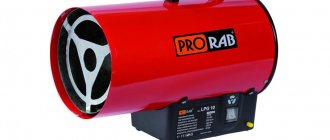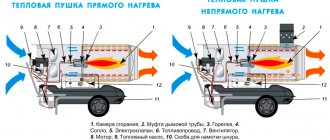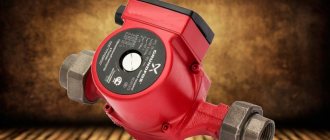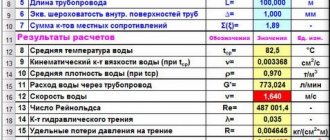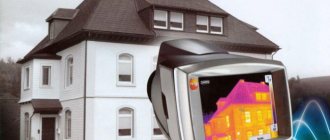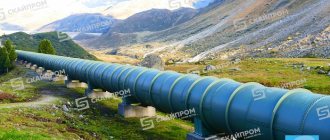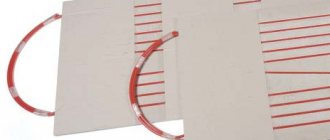A heat gun is a heating unit used to heat production and storage facilities and construction sites. The engines of these powerful fan heaters run on diesel fuel, gas or electricity. Even high-quality models of well-known brands fail due to the natural wear and tear of any part or assembly, violations of operating conditions, low-quality fuel or voltage drops in the network (for electric heating units).
It is advisable to entrust the repair of heat guns to professionals who will not only determine the cause of the current breakdown and eliminate it, but also identify hidden problems.
Operating principle
Such guns are often called fan heaters due to the similarity of their operating principle, but they have certain differences. They operate in the same way as other similar products: air flows around the combustion chamber body with the help of a fan and heats the room.
Operating principle of a heat gun
The design of modern guns includes a special sensor that turns off the device when a preset temperature is reached, thus achieving significant fuel savings. Garage workers make guns that can operate on different types of waste oil.
Factory or homemade, heaters have several very vulnerable spots, so they require frequent repairs. This includes cleaning nozzles and filters, replacing the fan and much more. To find out all the vulnerabilities, you need to study the design of such guns.
Important advice! After using the gun and placing it in long-term storage, the remaining fuel must be drained and the tank thoroughly rinsed to remove any remaining diesel fuel. Using fuel that has been stored for a long time is unsafe for the product.
Chimney installation diagram
| A) Minimum 1 m B) Minimum 1 m C) As short as possible D) Equal to or greater than the diameter of the combustion outlet of the heat generator E) Minimum 1 m | 1) Windproof device, complete with heat generator 2) Horizontal room with a minimum upward slope of at least 5° 3) Chimney with minimum internal dimensions of 20x20 cm 4) Explosion-proof door - inspection of the chimney 5) External wall 6) H-shaped draft activator |
Note: The diagrams shown are approximate. The installation of the chimney must comply with current regulations.
Product design
Products with an indirect method of heating rooms have chimneys through which all combustion products are removed, so in practice they can be used to heat residential premises. They are much safer, but they use oxygen for combustion, so ventilation or periodic airing is required. Their power is lower because losses occur through the exhaust system.
Design of diesel heat guns
For direct heating products, all combustion products remain in the room, so they cannot be used where people permanently live. They are used to heat construction sites and warehouses where there is natural air flow, because lack of ventilation can lead to carbon monoxide poisoning.
All products are equipped with a powerful metal casing: it prevents the entry of foreign objects that could cause damage or become a source of fire. Be sure to install a fuse that turns off the device when the case gets too hot.
A small compressor or pump is used for circulation, and a fan is used to pump it into the room, which experts consider one of the weak points of these products. Inside the housing there is a burner and a pipeline supplying fuel.
Main elements of a diesel heat gun:
- there is an exhaust pipe to remove smoke;
- fuel tank located at the bottom of the product;
- pump or compressor driven by an electric motor.
Malfunctions of gas heat guns
The following breakdowns occur in gas fan heaters:
- The flame goes out when the button responsible for the forced supply of gas is released. This malfunction may be caused by a failure of the safety sensor.
- Gas flows but does not ignite. The reason is incorrect adjustment of the piezoelectric element. You can replace a faulty piezo ignition with a regular lighter with a long handle designed for a gas oven.
- During operation of the unit, there is a strong odor of gas. In this case, it is necessary to clean and regulate the gas fuel supply system.
Gas heat guns are considered high-risk equipment. Therefore, it is advisable to entrust their maintenance and repair to professionals.
Possible problems
As a result of continuous and prolonged use, the equipment may experience a number of problems. Most often this is not due to the wear of some individual parts, but to mediocre maintenance. Let's look at common malfunctions of diesel heat guns.
Fuel supply is intermittent
The problem may arise due to accumulated dirt in the system hoses: fuel waste, oil, foreign objects, etc. This also includes a dirty tank. The malfunction can be resolved quite simply: drain the fuel, disconnect the hoses and thoroughly wash all the elements responsible for the fuel supply.
Fuel does not ignite
First of all, it is worth checking the spark plugs: replace faulty ones, and dry those filled with fuel. It would also be useful to adjust the gap between the electrodes if it has increased or, conversely, decreased.
The gun stalls periodically
Most likely the air filter is clogged. Considering the type of fuel, cleaning it is useless. It is much more efficient to buy a new one.
Diesel Gun Air Filter
Sometimes it’s all about the quality of the fuel: diesel fuel is different. Therefore, it makes sense to try to fill with fuel purchased at a gas station of another brand.
Heat exchanger temperature too low
If the flame in the combustion chamber does not burn intensely enough, the gun begins to idle. We have to set the maximum level of fuel supply, whereas previously the heat was sufficient at medium or even minimum values.
Most likely the injector is clogged. The element is quite easy to clean mechanically. The ideal option is purging with a compressor.
The gun is overheating
In a good half of cases, the thermostat is to blame. We remove the part, treat it from dirt and clean the contacts. In more advanced models, it cannot be repaired due to additional canopies - only replacement.
Start-up
Before putting the heat generator into operation, and therefore before connecting it to the electrical network, it is necessary to check that the characteristics of the electrical supply network correspond to the data given on the nameplate.
| On “DV” models, check that the cover (Fig. 1) of the supply voltage switching key is located so that the arrows on it point to the desired voltage value. |
| If necessary: — remove the cover; — set the switch (18) to the desired position; — Replace the protective cover. |
|
The heat generator can only operate in automatic mode when a control device such as a thermostat or timer is connected to the heat generator. Connection to the heat generator must be made by removing the connector cover (15) and connecting the thermostat plug. To turn on the device you must: - if it is connected to a thermostat, turn the switch to position ; - if it is not connected to the thermostat, turn the switch to position. When first put into operation or after the fuel system has completely emptied, the flow of fuel to the injector may be insufficient, and this may cause the flame control equipment to operate, stopping the heat generator. In this case, after waiting about one minute, press the reset button (13) and restart the heat generator. If it works, then the first operations that need to be performed are the following: 1. Check for the presence of fuel in the tank. 2. Press the button to restore the operating state (13). 3. If after performing these steps the heat generator does not work, then see the paragraph “Operation malfunctions, causes and solutions” and find the cause of the malfunction.
Heat gun maintenance
Indirect heating diesel gun
All preventive maintenance work on equipment is limited to setting up and treating the air intake system, compressor and fuel pump. The procedure for each individual heat gun is approximately the same. Let's look at the details of maintenance using the example of a classic model with indirect heating and automatic flame control.
The design of a diesel heat gun cannot be called complex. The fuel is supplied to the injector by the pump, after which it is produced in the combustion chamber. The burner is ignited using a pair of electrodes. During operation, the fan drives the flow through the chamber. Indirect heating involves the presence of an independent circuit, as a result of which the combustion products have virtually no contact with the heated air.
Equipment prevention:
- Remove the casing and clean the fan from dirt.
- Disconnect the high-voltage wires from the combustion chamber and remove the fuel hose. Let's blow through the last one.
- Loosen the fasteners on the camera and remove the block. We remove soot.
- We unscrew the nuts at the end of the chamber and gain access to the nozzle. Let's blow it out.
- Let's put everything back together in reverse order.
Electrical diagram
AP Test equipment T.A. Ambient thermostat connector ST Voltage indicator LI1 Safety thermostat EV1 Electrovalve F.O. Photoresistance CO Capacitor MV Fan motor FUA Fuse 3.15 A RV ControlAP Test equipment T.A. Ambient thermostat connector ST Voltage indicator LI1 Safety thermostat EV1 Electrovalve F0 Photoresistance C0 Capacitor MV Fan motor FUA Fuse 3.15 A F.U. Fuse 6.3 A RV1 Control T0 High voltage transformerSafety precautions when using guns
To ensure fire safety measures, the container containing the fuel reserve for the product must be located at a distance of 8 meters from heating devices or any open flame sources.
Remember! Instead of diesel fuel, you cannot use gasoline of any brand: the likelihood of an explosion increases many times over, because it is more volatile.
Safety measures when using guns are quite simple - you should immediately leave the premises if you feel:
- sudden and severe dry mouth;
- pain in the throat, nose or eye area;
- sudden attacks of headache;
- urges of nausea.
Many people react very painfully to carbon monoxide indoors: for example, people with lung diseases or cardiac patients, anemia, and pregnant women. They are contraindicated to be in places where a diesel heat gun with direct heating is used.
General recommendations
Hot air generators use diesel fuel to operate. Direct-acting heat generators supply hot air and combustion products into the room, while indirect-acting heat generators are equipped with a connection for removing combustion products through a chimney. The operating environment must comply with the rules and laws regarding the scope of use of this device. It is recommended to ensure that: - the instructions contained in this manual are carefully followed; — the heat generator is not installed in rooms where there is a danger of explosion, or which are easily flammable; — flammable materials are not located near the device (the minimum distance must be 2 m); — sufficient measures have been taken to prevent fire; — ventilation of the room in which the generator is located is guaranteed, and it is sufficient for the operating needs of the heat generator itself. In particular, for a series B heat generator, the air circulation must be calculated taking into account the fact that it supplies both hot air and combustion products to the room; — the heat generator is installed next to the chimney pipe (see paragraph “Chimney pipe installation diagram”) and connected to the electrical panel; — there are no obstacles or blockages in the supply and/or pressure air ducts, such as rags or curtains placed on the device or hung on the walls, or bulky objects located next to the device; - kerosene has been added to the tank if the ambient temperature is too low; - the heat generator has been checked before putting into operation and is periodically monitored during operation: in particular, the approach of children and/or animals without supervision must be prevented; — before each use, before connecting the plug to the socket, check that the fan rotates freely; — after each use, the electrical plug was disconnected from the socket.
